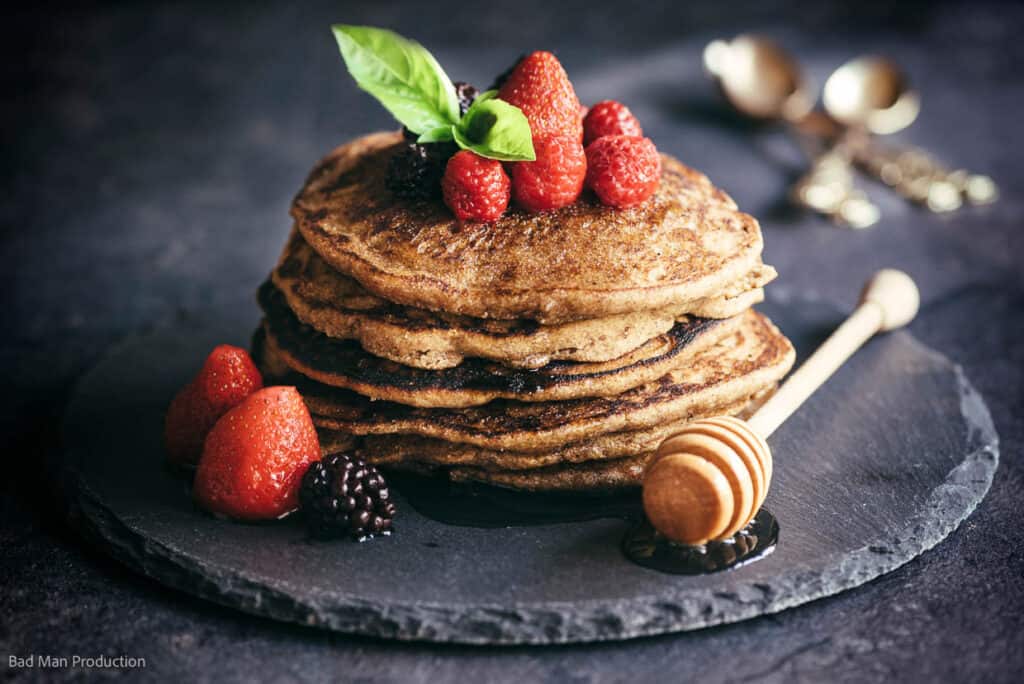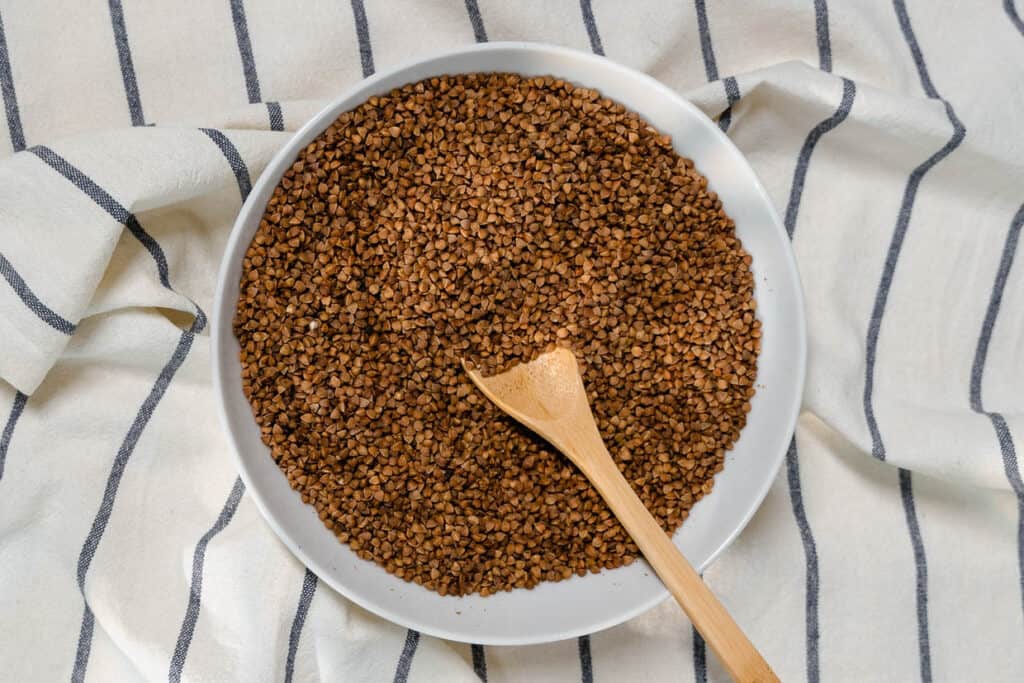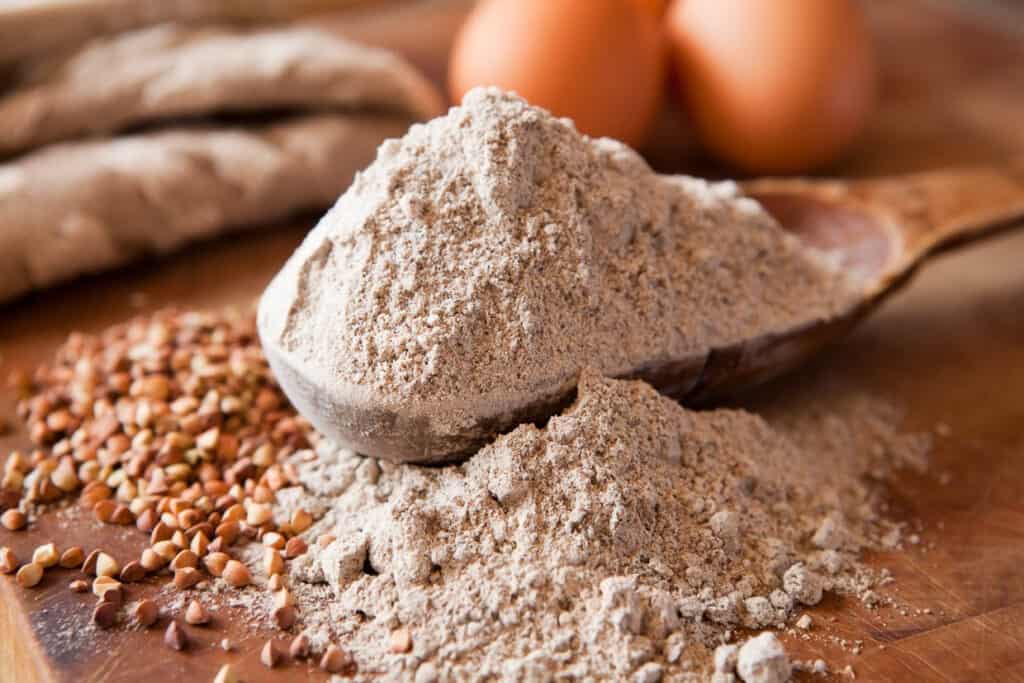Is buckwheat gluten-free? Despite its name, buckwheat is a delicious wheat-free pseudo-grain that makes an excellent addition to any gluten-free pantry.

What Is Buckwheat?
Buckwheat is a flowering plant in the Polygonaceae family, including sorrel and rhubarb. Buckwheat seeds are prepared much like a grain but are considered a pseudo-grain, as they aren’t a member of the grass family, such as grains like wheat, oats, or teff.
It’s easy to mistake this delicious plant for a form of wheat, thanks to its name, but buckwheat is, in fact, gluten free. The seeds of this plant are used much like cereal or ground into flour to make everything from baked goods to noodles.
Is Buckwheat Always Gluten-Free?
Even though buckwheat in and of itself is gluten free, if you have celiac disease or a severe gluten allergy, you want to ensure that any form of buckwheat you purchase is certified gluten free.
Like many food products, buckwheat groats and flour are still susceptible to cross-contamination when processed on shared equipment.
But you can rest assured that buckwheat doesn’t contain gluten and is considered a gluten-free food.

The Many Uses of Buckwheat
Buckwheat comes in many forms, including hulled and unhulled groats, flour, soba noodles, and more.
Here are some favorite ways to use the most common forms of buckwheat:
Buckwheat Groats
Buckwheat groats are nothing more than the seeds of the buckwheat plant. You can buy groats in both hulled and unhulled varieties, though the hulled variety is easier to cook and digest. The unhulled variety is primarily used to make dark buckwheat flour.
“While there are a variety of uses for buckwheat groats, my favorite is to toast them lightly and use them as a crunchy topping on salads, yogurt, smoothies, and even soups. They’re a wonderful gluten-free alternative when you’re in need of a crunchy textural element in a dish.” — Gina Matsoukas, Running To The Kitchen
- Cook buckwheat groats like you would quinoa by rinsing and then simmering in water until tender.
- Buckwheat groats can be used like steel-cut oats to make everything from granola to baked bars.
- Make your own buckwheat flour by blending raw buckwheat groats to a fine powder.
- Use buckwheat instead of oats for your morning porridge.
- Mix buckwheat groats into a simmering chili to add texture and nutrition.
- Add groats to a stir-fry much like you would cauliflower rice.

FDL’S 75 Best Bites

Our cookbook with 75 tasty recipes will be your go-to kitchen companion for easy dinners with ad-free recipes right at your fingertips. Crafted by experienced chefs and recipe developers, this collection offers a treasure trove of tried-and-true dishes that make mealtime a breeze.
Get the Recipe: FDL’S 75 Best Bites
Buckwheat Flour
Buckwheat flour is made by grinding or blending buckwheat groats. Unhulled groats make what is known as light buckwheat flour, whereas hulled groats make dark buckwheat flour.
“I’m Russian, so we use buckwheat a lot — mainly toasted buckwheat that we call ‘kasha’ and eat cooked like rice and mixed with sautéed onions and butter. Jews of Russian and Polish descent also eat buckwheat with bowtie pasta — called kasha varnishkes. But since moving to Quebec, where I discovered a lot of French cuisine, I learned to use buckwheat flour in a myriad of ways — in Breton-style crepes, and in GF baked goods that have a lovely nutty flavor.” — Ksenia Prints, At The Immigrant’s Table
- Buckwheat flour is most well known for its use in breakfast fare, like buckwheat pancakes and French crepes.
- Mix it into a blend of other gluten-free flours to add the unique flavor profile that buckwheat provides.
- Use it to make savory baked goods like gluten-free sandwich bread,
pizza crust, or naan. - Use buckwheat flour to thicken soups and gravies.
- Try your hand at making your own buckwheat soba noodles.
- Buckwheat flour can also be used to make sweets like buckwheat cinnamon rolls, cookies, and cakes.
What Does Buckwheat Taste Like?
Buckwheat has a uniquely nutty and earthy flavor. If using unhulled groats or dark buckwheat flour, this flavor will be more robust and slightly more bitter than hulled groats or light buckwheat flour.
While it isn’t as neutral tasting as some gluten-free flours, buckwheat flour can add its own special flair to recipes and works much like an all-purpose flour in gluten-free baked goods.
A Special Tip
If you find yourself a fan of the flavor of buckwheat, you can roast the raw groats in the oven to bring out that distinctive buckwheat flavor even more.
- To roast groats, preheat the oven to 325°F, then spread the groats out on a parchment-lined baking sheet in a single layer.
- Place the baking sheet in the oven and roast for 25 minutes, stirring the groats occasionally, until they smell toasty and have turned golden.
- Allow the roasted groats to cool before storing and using.
Is Buckwheat Healthy?
Buckwheat is rather nutrient-dense and packed with protein, fiber, and necessary minerals like copper and iron, to name a few. While buckwheat is heavy handed in the carbohydrates department and certainly not keto-friendly, it does score low on the glycemic index. It doesn’t encourage a spike in blood sugar levels, which is always a good thing.
If you don’t want to use buckwheat, then try this buckwheat flour substitute.
Where To Buy Buckwheat
While it wasn’t always the case, buckwheat is now readily available at many major grocery stores and online retailers. You can often find buckwheat flour in the gluten-free section of grocery stores and buckwheat groats in the cereal section.
Be sure to look out for the certified gluten-free symbol on the packaging if gluten is a concern.
In Conclusion
Now that we’ve settled that buckwheat is gluten free, it’s time to get cooking.
Buckwheat is a versatile gluten-free ingredient that comes in a few different forms and can be used in many ways. It offers a wholly unique flavor profile, a nice dose of nutrition, and is easy to purchase and use.
There’s no need to fret when incorporating this wholesome pantry staple into your weekly meals!
Kristen Wood is a photographer, writer, and creator of the food blog MOON and spoon and yum. She is also the author of Vegetarian Family Cookbook, Fermented Hot Sauce Cookbook, and Hot Sauce Cookbook for Beginners. Her work has been featured in various online and print publications, including Elle, Martha Stewart, Yoga Journal, and more.